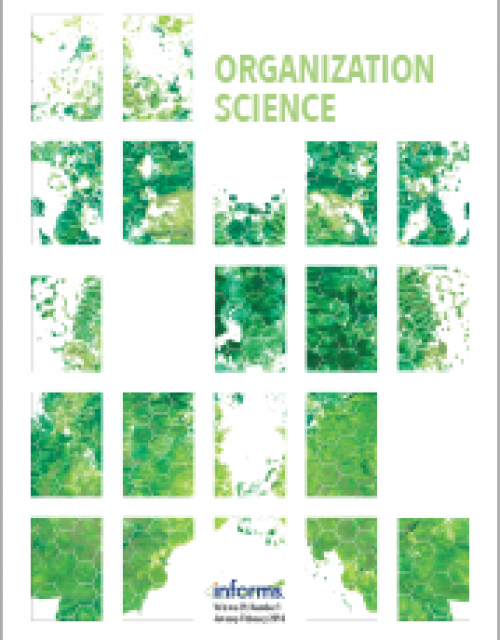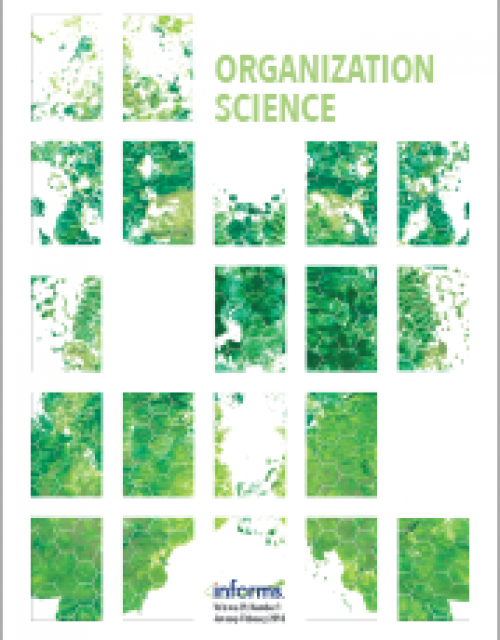Publication records
Subject(s)
Finance, accounting and corporate governance
Keyword(s)
financial statement, annual report, accounting, valuation, balance sheet, cashflow statement, income statement
Secondary Title
Betriebswirtschaft für Führungskräfte: Eine Einführung in betriebswirtschaftliches Denken und Handeln
Edition
5th ed.,
Pages
723–774
ISBN
978-3-7910-3760-8
ISBN (Online)
978-3-7910-4135-3
Subject(s)
Unspecified
Keyword(s)
total consumer time, digital gatekeepers, gatekeeper power
Pages
37
ISSN (Online)
2190-9938
Subject(s)
Strategy and general management
Keyword(s)
Accounting, finance
Grundlegende Fragen der Unternehmensführung, betriebswirtschaftliche Methoden, Werkzeuge und Zusammenhänge verstehen: Das Buch vermittelt Führungskräften und Studierenden die notwendigen BWL-Kenntnisse. Praxisorientiert und leicht verständlich erschließt es - gerade auch für Nicht-BWLer - alle wichtigen Themen: Von der Ausrichtung auf Markt und Wettbewerb, über die Gestaltung interner Strukturen und Prozesse, bis hin zu den Instrumenten der Unternehmenssteuerung und der Finanzberichterstattung.
Für die 5. Auflage wurden sämtliche Beiträge überarbeitet und aktualisiert. Mit Übungsaufgaben, Lösungshinweisen und Kurzglossar wichtiger englischsprachiger Fachbegriffe.
Für die 5. Auflage wurden sämtliche Beiträge überarbeitet und aktualisiert. Mit Übungsaufgaben, Lösungshinweisen und Kurzglossar wichtiger englischsprachiger Fachbegriffe.
Volume
5th ed.,
Pages
911
ISBN
978-3-7910-3760-8
ISBN (Online)
978-3-7910-4135-3
Subject(s)
Entrepreneurship
Keyword(s)
Design thinking, digital transformation, innovation, customer centricity
Business owner and managers are facing the challenge of how to best drive digital transformation in their organizations. Design thinking might be one method to address these challenges and, at the same time, support a mindset change within the companies.
Subject(s)
Economics, politics and business environment; Information technology and systems; Technology, R&D management
Keyword(s)
Fiber optic technology, state aid, ex-post evaluation, efficiency, OECD countries
JEL Code(s)
C51, C54, H25, L52, O38
The deployment of new broadband networks (NBNs) based on fiber-optic transmission technologies promises high gains in terms of productivity and economic growth, and has attracted subsidies worth billions from governments around the world in the form of various state aid programs. Yet, the effectiveness and the efficiency of such programs remains largely unstudied. We employ panel data from 32 OECD countries during 2002-2019 to provide robust empirical evidence of both. We find that state aid significantly increases NBNs by facilitating the deployment of new connections to 22% of households in the short term and 39.2% in the long term. By comparing the actual amounts of state aid support to the estimated impact on GDP growth, we also find it to be highly cost efficient, as the programs break even after three years on average.
View all ESMT Working Papers in the ESMT Working Paper Series here. ESMT Working Papers are also available via SSRN, RePEc, EconStor, and the German National Library (DNB).
Pages
35
ISSN (Print)
1866–3494
Subject(s)
Management sciences, decision sciences and quantitative methods; Product and operations management; Technology, R&D management
Keyword(s)
Data, machine learning, data product, pricing, incentives, contracting
This paper explores how firms that lack expertise in machine learning (ML) can leverage the so-called AI Flywheel effect. This effect designates a virtuous cycle by which, as an ML product is adopted and new user data are fed back to the algorithm, the product improves, enabling further adoptions. However, managing this feedback loop is difficult, especially when the algorithm is contracted out. Indeed, the additional data that the AI Flywheel effect generates may change the provider's incentives to improve the algorithm over time. We formalize this problem in a simple two-period moral hazard framework that captures the main dynamics among ML, data acquisition, pricing, and contracting. We find that the firm's decisions crucially depend on how the amount of data on which the machine is trained interacts with the provider's effort. If this effort has a more (less) significant impact on accuracy for larger volumes of data, the firm underprices (overprices) the product. Interestingly, these distortions sometimes improve social welfare, which accounts for the customer surplus and profits of both the firm and provider. Further, the interaction between incentive issues and the positive externalities of the AI Flywheel effect has important implications for the firm's data collection strategy. In particular, the firm can boost its profit by increasing the product's capacity to acquire usage data only up to a certain level. If the product collects too much data per user, the firm's profit may actually decrease, i.e., more data is not necessarily better.
View all ESMT Working Papers in the ESMT Working Paper Series here. ESMT Working Papers are also available via SSRN, RePEc, EconStor, and the German National Library (DNB).
Pages
48
ISSN (Print)
1866–3494
Subject(s)
Economics, politics and business environment; Information technology and systems
Keyword(s)
online markets, price comparison websites, price dispersion, price competition, platforms, consumer search, consumer welfare
JEL Code(s)
L11, L86, D43
The large and growing industry of price comparison websites (PCWs) or “web aggregators” is poised to benefit consumers by increasing competitive pricing pressure on firms by acquainting shoppers with more prices. However, these sites also charge firms for sales, which feeds back to raise prices. I find that introducing any number of PCWs to a market increases prices for all consumers, both those who use the sites, and those who do not. I then use my framework to identify ways in which a more competitive environment could be achieved.
Volume
62
Journal Pages
1081–1110
ISSN (Online)
1468-2354
Subject(s)
Technology, R&D management
Keyword(s)
Patents, intellectual property rights
This article summarizes the century-old debate whether a patent system spurs innovation or is rather a burden to society.
Volume
74
Journal Pages
6–9
Subject(s)
Technology, R&D management
Keyword(s)
Selection, novelty, decision-making, innovation, panel
We examine how groups fall prey to the sequence effect when they make choices based on informed assessments of complex situations, for example, when evaluating research and development (R&D) projects. The core argument is that the temporal sequence of selection matters because projects that appear in a sequence following a funded project are themselves less likely to receive funding. Building on the idea that selecting R&D projects is a demanding process that drains participants’ mental and emotional resources, we further theorize the moderating effect of the influence of the timing of the panel meeting on the sequence effect. We test these conjectures using a randomization in sequence order from several rounds of R&D project selection at a leading professional service firm. We find robust support for the existence of a sequence effect in R&D as well as for the moderating effect. We further explore different explanations for the sequence effect and how it passes from the individual to the panel. These findings have broader implications for the literature on innovation and search in general and on group decision making for R&D, specifically, as they suggest that a previously overlooked dimension affects selection outcomes.
Copyright © 2021, The Author(s)
Volume
32
Journal Pages
987–1008
Subject(s)
Management sciences, decision sciences and quantitative methods; Strategy and general management
Keyword(s)
Reinforcing processes, quality, performance evaluation, movie industry, luck
When does market success indicate superior merit? We show that when consumer choices between products with equal prices depend on quality but also on past popularity, more popular products are not necessarily of higher quality. Rather, a medium level of popularity may be associated with lower quality than lower levels of popularity. Using a formal model we show that this kind of non-monotonic association occurs when reinforcing processes are strong. More generally, a dip can occur when outcomes depend on both quality and resources and the latter are allocated bimodally, with some being given a lot of resources and most receiving little. Empirically, we illustrate that such a dip occurs in the association between movie theater sales and ratings. The presence of a dip in the outcome-quality association complicates learning from market outcomes and evaluation of individuals and new ventures, challenges the legitimacy of stratification systems, and creates opportunities for sophisticated evaluators who understand the dip.
Copyright © 2021, The Author(s)
Volume
32
Journal Pages
1079–1099

